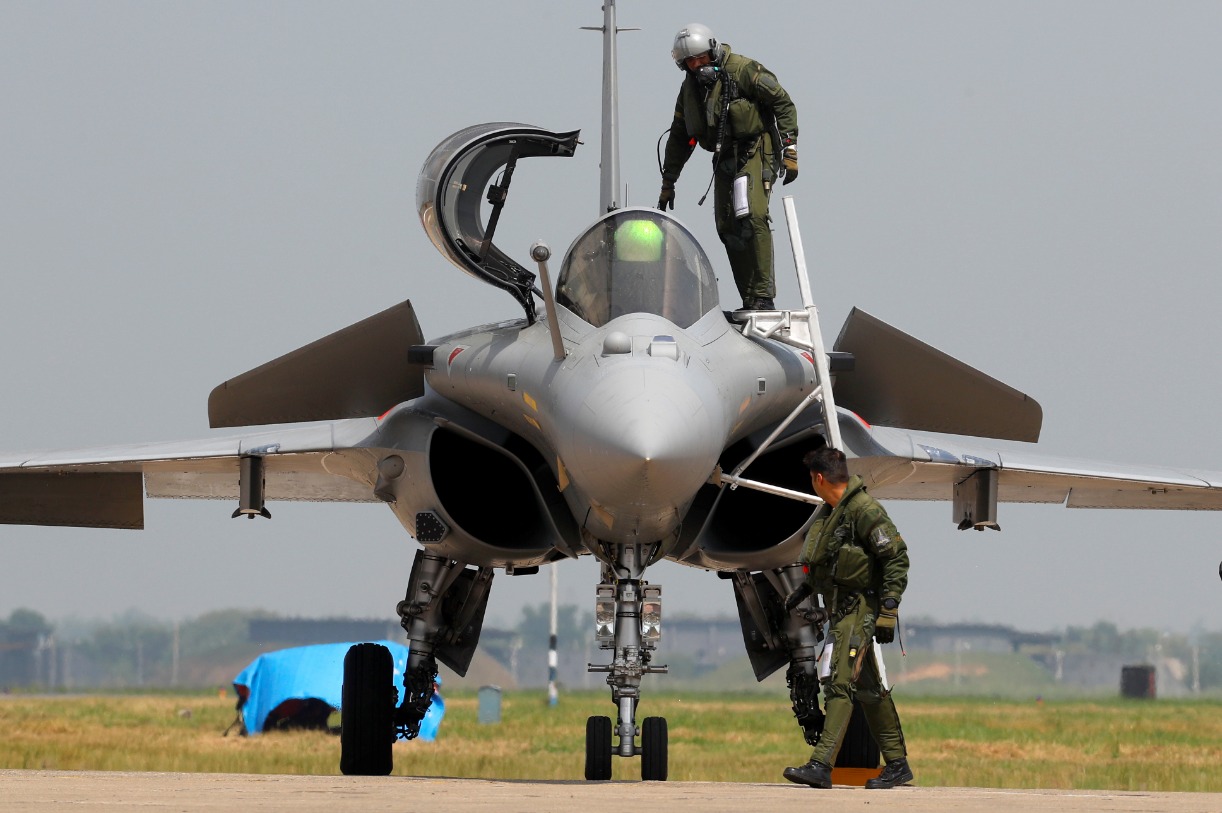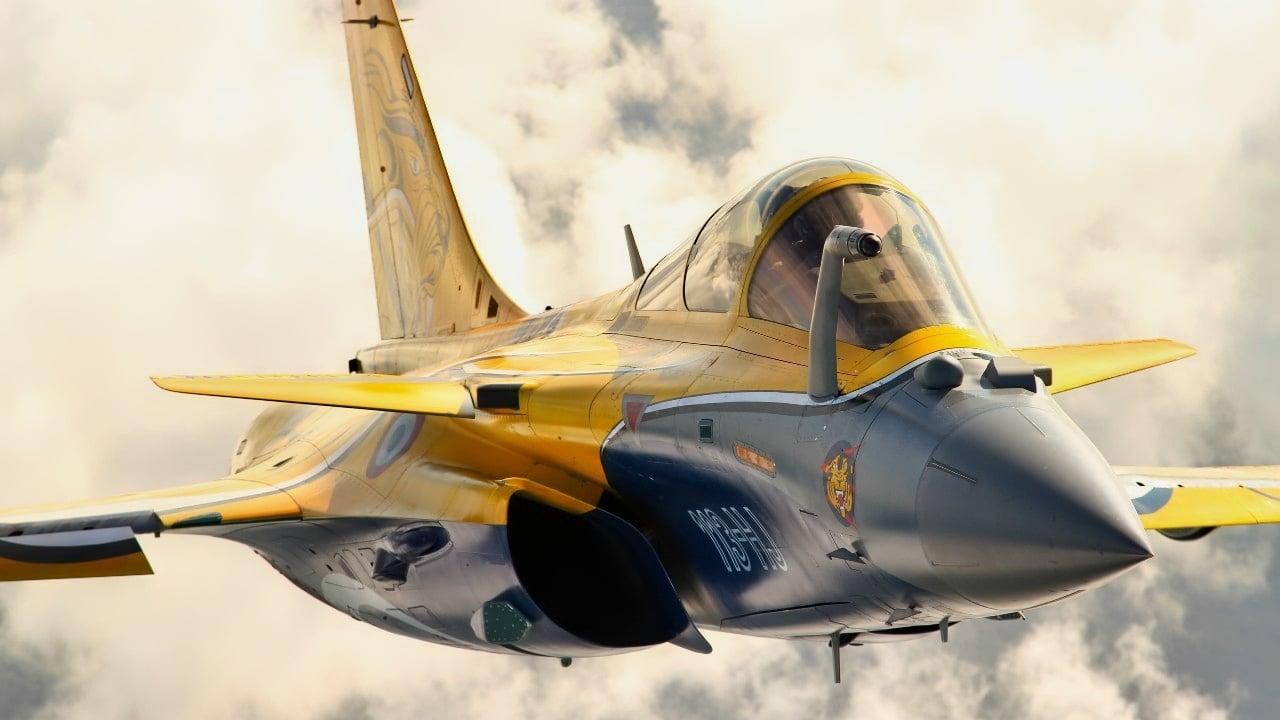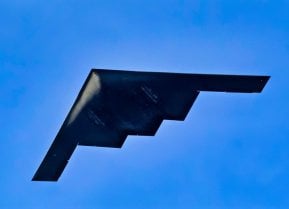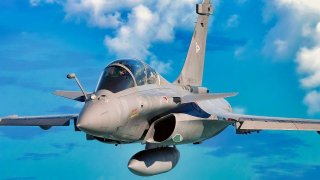France's Dassault Rafale Fighter Nightmare Is Just Getting Started
French aviation giant Dassault announced recently that it aims to deliver 20 of its Rafale fighter jets to customers in 2024, despite supply-chain issues that could hamper production. The French aircraft is popular with India and with customers in the Middle East. Demand has become so great that Dassault may not be able to keep up.
Summary: Dassault Aviation plans to deliver 20 Dassault Rafale fighter jets in 2024 despite production challenges due to supply-chain issues. The Rafale, popular in India and the Middle East, has seen surging demand, potentially stretching Dassault's 36-month delivery commitment.

-The International Institute for Strategic Studies highlights a backlog of 228 aircraft, including recent orders from Indonesia and France.
-The Rafale is designed as an "omnirole" fighter, replacing seven aircraft types for the French military, offering a versatile solution for countries looking for alternatives to American and Russian jets. However, supply chain and talent shortages could impact Dassault's ability to meet demand.
France's Rafale Fighter Jet: Soaring Demand Challenges Dassault's Delivery Timeline
French aviation giant Dassault announced recently that it aims to deliver 20 of its Rafale fighter jets to customers in 2024, despite supply-chain issues that could hamper production. The French aircraft is popular with India and with customers in the Middle East. Demand has become so great that Dassault may not be able to keep up.
"Dassault regularly makes a selling point of its ability to begin delivering Rafale combat aircraft to prospective customers just three years from contract signature,” the International Institute for Strategic Studies (IISS) said in an analysis. “However, the company's recent flurry of Rafale sales could make that 36-month commitment more challenging and may even jeopardize some future deals.”
The Institute assessed in January that Dassault's production backlog for Rafale has swelled to 228 aircraft.
"That number reflects the January 2024 confirmation by Indonesia that it will take the final 18 aircraft from its 42 Rafale commitment (disclosed two years ago) and France’s December 2023 order for 42 aircraft," the analysis added.
Dassault Rafale Fighter Jet Has One Problem It Can't Seem to Shake: Demand for the Plane
The Dassault Rafale – which means literally "gust of wind," or "burst of fire" in a more military sense – was conceived for use by the French Air Force and Navy as an "omnirole" fighter, meaning that it would replace seven types of combat aircraft in operation at the time of its development. The new aircraft was developed to carry out a wide range of missions, including air-defense/air-superiority, anti-access/area denial, reconnaissance, close air support, dynamic targeting, air-to-ground precision strike/interdiction, anti-ship attacks, nuclear deterrence, and even buddy-buddy refueling.

The various requirements for the multi-mission roles were taken into account during the aircraft's early development. Engineers sought to create an aircraft that was able to go above the needs for each type of mission and serve as a true "force multiplier." The Rafale is slated to be the French armed forces’ prime combat aircraft until at least 2050.
As noted in a report from Army Recognition, "The Rafale stands as an option for countries unwilling to bear the political and economic burden associated with purchasing American and Russian aircraft such as the F-35, F-16, and Su-35."
That explains at least in part why the Rafale has gained popularity in India and across the Middle East. However, there is a significant downside for Rafale customers. Namely, it depends on a single country – one whose defense industrial base is already struggling to supply Ukraine and replenish the French military.
This accounts for the significant backlog, and the company may struggle in 2024 to meet the demand.
"Dassault relies heavily on a domestic supply chain for Rafale that insulates it somewhat from global supply-chain snarls (yet) the company and its suppliers are not immune to them," the IISS report added. "Engineering-talent shortages could also derail a sharp increase in Rafale manufacturing."
Dassault Rafale Origins: Avion de Combat Experimental
The Rafale traces its origins back to the Avion de Combat Experimental (ACX) program in the early 1980s before France's withdrawal from the multinational European Fighter Aircraft (EFA) project in 1985. It has been suggested that one reason Paris pulled out of the EFA was its requirement for a smaller and lighter combat aircraft that could operate from aircraft carriers.

The ACX originally took the form of a technology demonstrator. It was first flown in July 1986 and was later redesignated as Rafale A. It established the primary design features for the Rafale, including the aircraft’s basic aerodynamic configuration, a fly-by-wire control system, and a structure that made extensive use of composites.
In its initial form, the Rafale A demonstrator was powered by a pair of 68.6 kilonewton (15,422 pound)-thrust General Electric F404-GE-400 turbofans. Experiences with the Rafale A led to the Rafale C, initially known as the Avion de Combat Tactique, which first flew in May 1991. It was powered by two 75 kilonewton SNECMA M88-2 afterburning turbofans.
A Burst of Fire
The fourth-generation combat aircraft utilizes a quadruple-redundant fly-by-wire system that provides for longitudinal stability and superior handling performance across three digital channels and one separately designed analog channel. The close-coupled/delta wing configuration ensures that the Rafale remains agile even at high angles of attack.
The airframe radar cross-section is minimized by using appropriate materials and mold lines, including serrated edges to the trailing edge of the wings and canards.
Key Dassault Rafale C Specs
Type: Multi-role fighter
Dimensions: 15.27m (50ft, 1.25-inches) long; 10.80m (35ft, 5.25-inches) wingspan; and 5.35 (17ft, 6.25-inches) height
Weight: 24,500kg (54,102pounds) maximum take-off
Powerplant: Two 75kN (16861pound) SNECMA M88-2 afterburning turbofans
Maximum Speed: 1,913km/h (1,189 mph) at 11,000m (36,090ft)
Service Ceiling: 16,765m (60,000ft)
Range: 1,055km (655 miles), low-level with drop tanks
Crew: One
Armament: One 30mm (1.18-inch) cannon and up to 9,500kg (20,944 pounds) of disposable stores carried on 14 under-fuselage, underwing, and wingtip stations

The Rafale first entered service in 2001 and has been progressively equipped to more advanced standards. It was selected for purchase by the Egyptian Air Force, the Indian Air Force, the Qatar Air Force, the Hellenic Air Force, the Croatian Air Force, the Indonesian Air Force, and the United Arab Emirates Air Force.
The Rafale has been used in combat in Afghanistan, Libya, Mali, Iraq, and Syria.
Author Experience and Expertise: Peter Suciu
Peter Suciu is a Michigan-based writer. He has contributed to more than four dozen magazines, newspapers, and websites with over 3,200 published pieces over a twenty-year career in journalism. He regularly writes about military hardware, firearms history, cybersecurity, politics, and international affairs. Peter is also a Contributing Writer for Forbes and Clearance Jobs. You can follow him on Twitter: @PeterSuciu. You can email the author: [email protected].


